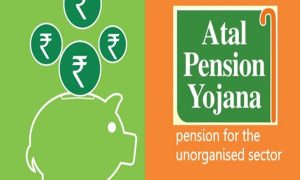If you are confused between post office schemes and bank fixed deposit, the next few 2-3 minutes reading this article will help you take a better decision. Those interested in debt instruments such as Post Office small savings schemes and bank FD do not want the high volatility of stock market and are therefore ready to settle for lower returns. However, with the developments of the last few months, it is safe to say that fixed-income investors are better off than equity investors.
Bank FDs have become even more attractive due to RBI’s consistent rate hikes since April. But risk-free government-backed post office savings schemes are preferable in an interest-rising rate environment as they see rate revisions every quarter.
Senior Citizen Savings Scheme
The Senior Citizen Savings Scheme (SCSS) is a government-backed saving scheme meant to provide a low-risk, steady stream of income along with tax benefits to the elderly. Retirees can invest up to Rs 15 lakh in lump sum individually or jointly. Offered by the Department of Posts, SCSS available across all banks and postal offices in India.
The Central government last month hiked rates on some small savings schemes by up to 30 basis points for the third quarter (October-December), a finance ministry notification said on Thursday. With this, a three-year time deposit with post offices would yield 5.8 percent from the existing 5.5 percent. Senior Citizen Savings scheme will earn 20 basis points more to 7.6 per cent from the existing rate of 7.4 per cent during the October-December period, the notification said. This return is better than most bank FDs which are currently offering 5.5% to 6.1% interest.
Those who retired under the Voluntary Retirement Scheme (VRS) or superannuation in the age bracket of 55 to 60 years can open an SCSS account within one month of retirement. Such persons can open SCSS account only when the source of investment is retirement benefits within one month of receiving the retirement benefits. However, Finance Ministry in a circular dated May 26, 2020, did away with the one-month clause for those who retired during the lockdown period in 2020. The circular stated that the decision was taken to safeguard the small investors from the effect of the nationwide lockdown due to the Covid-19 pandemic.
Public Provident Fund (PPF)
One of the most popular investment tools for long-term investors, PPF falls in the exempt-exempt-exempt (EEE) categoty, which means returns earned are totally tax free. A single adult resident Indian or a guardian on behalf of a minor/person of unsound mind can open a PPF account with a minimum deposit of Rs 500 and a maximum yearly commitment of Rs 1.5 lakh. Deposits under the scheme are eligible for section 80C of the Income Tax Act deductions. PPFs have a 15-year maturity duration. The interest rate offered on a PPF is 7.1 per cent per annum (compounded yearly). However, it will be applicable as notified by the Ministry of Finance every quarter, so the interest rate can be changed.
Sukanya Samriddhi Yojana (SSY)
As its name implies, this post office scheme is designed for parents who want to save money for their daughter’s future. Guardians can open SSA accounts on behalf of their girl child under the age of ten, and only one account can be opened in India under a girl’s name for up to two daughters in a family.
The scheme is offering an interest rate of 7.6 per cent per annum which is calculated on yearly basis and compounded yearly. An SSA account can be opened with a minimum deposit of Rs 250 and a maximum deposit of Rs 1,50,000, and deposits can be made for a maximum of 15 years after the account is opened. Sukanya Samriddhi Account deposits are tax-deductible up to Rs. 1.5 lakh per year under Section 80C.





































